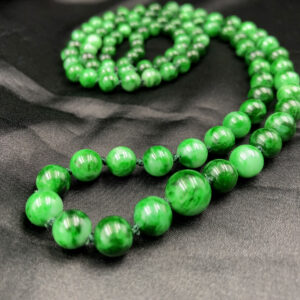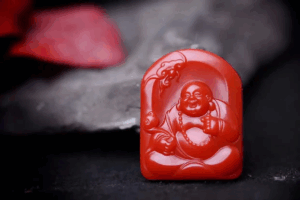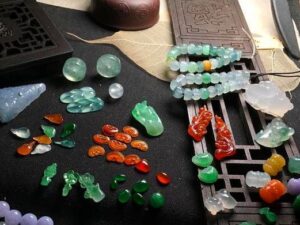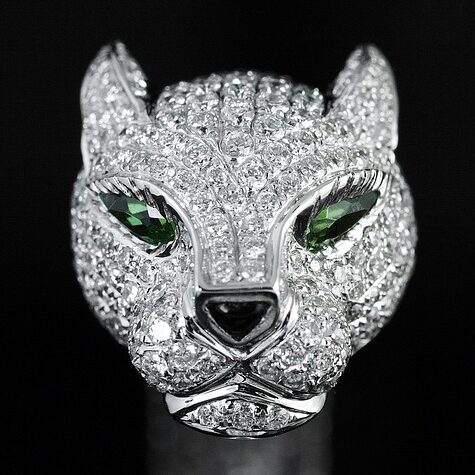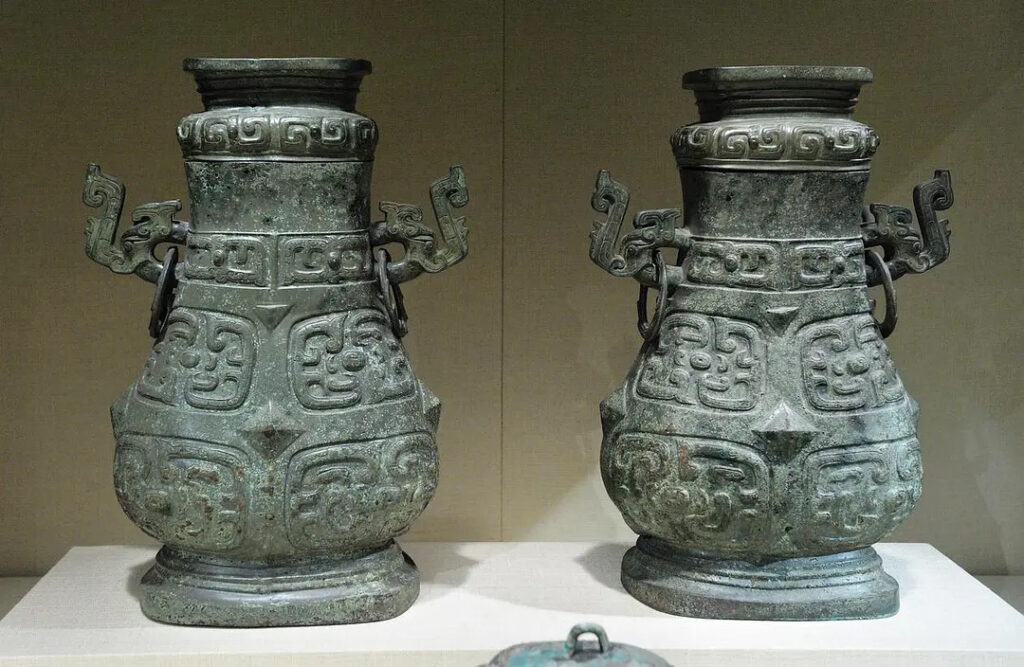
Understanding Bronze Vessels: Types and Terminology
認識青銅器的種類和名稱
I. Food Vessels (食器)
一、食器
① Dǐng (鼎)
Cooking and serving vessel. The earliest bronze dǐng was unearthed from the Late Xia Dynasty Erlitou site. Remained popular throughout the Bronze Age.
① 鼎:煮食器或盛食器。目前發現最早的青銅鼎出土於夏晚期的二里頭遺址,青銅鼎流行於整個青銅器時期。
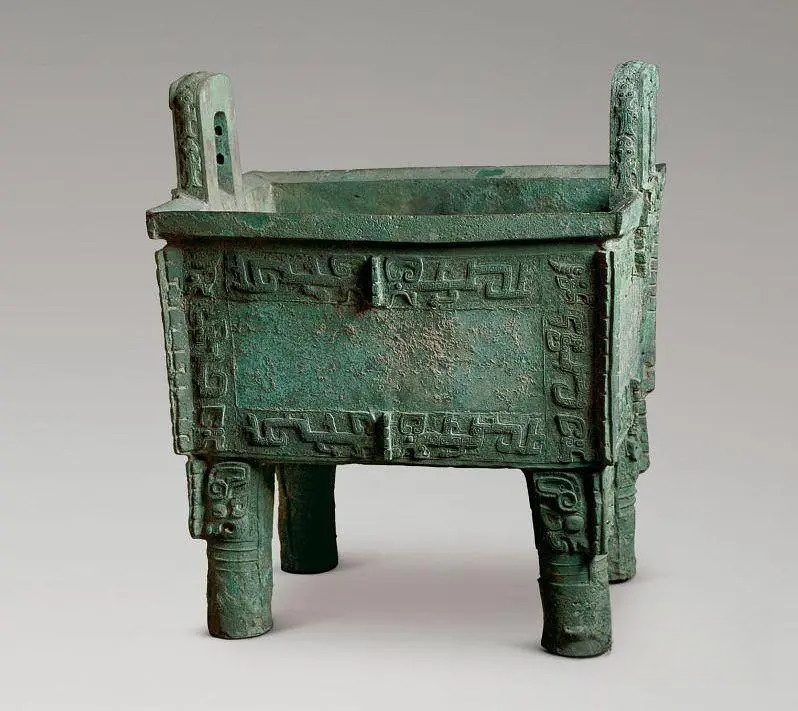
② Guǐ (簋)
Food container for cooked rice, equivalent to modern bowls. Often used with dǐng. Popular from Shang to Eastern Zhou dynasties.
② 簋:盛食器,用來盛放煮熟的飯食,相當於現在的碗,多與鼎搭配使用。簋流行的時間也很長,從商到東周。
③ Lì (鬲)
Cooking and serving vessel for meat and porridge. Popular from Shang to Eastern Zhou periods.
③ 鬲:煮食器與盛食器,用來烹煮肉食(據說還用來煮粥)。流行於商代至東周時期。
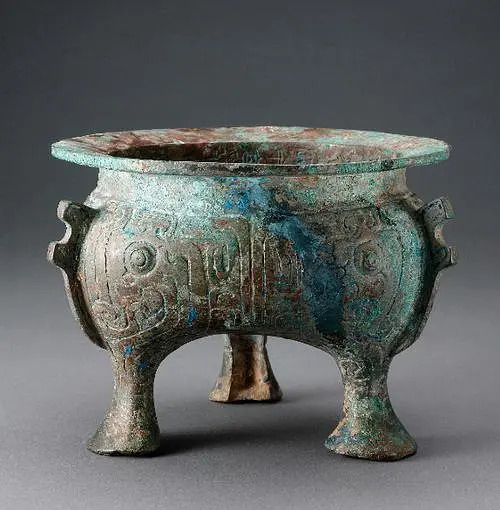
④ Yǎn (甗)
Steamer vessel, equivalent to modern steamers. Consists of upper part (zèng) for food and lower part (lì) for water, separated by a perforated bronze plate. Used from Early Shang, essential in most burial sets during Zhou.
④ 甗:蒸炊器,相當於現在的蒸鍋,全器分上、下兩部分,上部為甑置食物;下部為鬲置水。甑與鬲之間有一銅片叫做箄,上有通蒸氣的十字孔或直線孔。青銅甗在商代早期已經開始使用,到了兩周之際,甗是絕大多數殉葬銅器的墓中必有之器。
⑤ Xǔ (盨)
Food container where both vessel and lid could serve as bowls. Appeared in Mid-Western Zhou, disappeared by Early Spring and Autumn period.
⑤ 盨:盛食器,跟簋一樣也是飯碗,器蓋兩部分均可作為容器使用。大致出現於西周中期,到了春秋初期就基本消失了。
⑥ Duì (敦)
Specialized container for millet. Produced from Mid-Spring and Autumn period until after Qin Dynasty. Characterized by spherical form with symmetrical lid and body.
⑥ 敦:盛食器,又敦產生於春秋中期,大致在秦代以後消失。敦的基本形制就是上下內外皆圓,器與蓋合成球體或者扁球體,一般上下對稱。
⑦ Fǔ (簠)
Rectangular food container with identical lid and body that form a complete unit when joined. Popular from Late Western Zhou to Late Warring States.
⑦ 簠:盛食器。流行於西周晚期至戰國晚期。簠的形制要點是長方形大口,器與蓋形狀相同,大小一致,上下對稱,合起來成為一體,分開則成為兩個器皿。
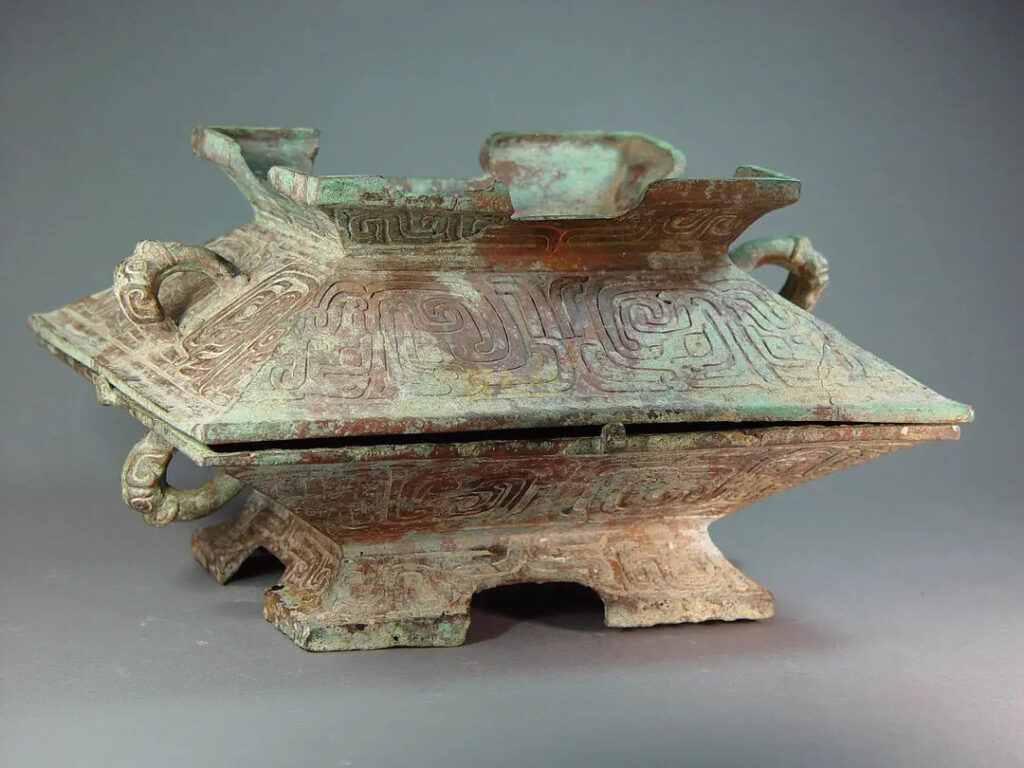
⑧ Dòu (豆)
Container for pickles and sauces. The thickness and length of the stem show distinct period and regional characteristics.
⑧ 豆:盛食器,用來盛放腌菜、醬料等調味品,相當於現在的菜碗。值得一提的是,豆柄的粗細長短帶有明顯的時代和地域特徵。
II. Wine Vessels (酒器)
二、酒器
① Jué (爵)
Drinking vessel, equivalent to modern wine cups. First appeared in Erlitou culture, earliest known wine vessel. Disappeared after Mid-Western Zhou.
① 爵:飲酒器,大致相當於現在的酒杯。銅爵最早出現於二里頭文化,是目前所知最早出現的酒器,西周中期後基本消失。
② Jiǎo (角)
Drinking vessel similar to jué but without columns. Mostly Shang Dynasty, latest to Early Western Zhou.
② 角:飲酒器。時代大多都屬商代,最晚不晚於西周早期。角的形制與爵相似,大小也相仿。
③ Jiǎ (斝)
Wine warming vessel also used in rituals for libation ceremonies. Appeared in Erlitou culture, popular Shang to Early Western Zhou.
③ 斝:溫酒器,也用於祭祀,專門用於行祼禮。它始見於二里頭文化時期,流行於商至西周早期,然後逐漸消失不見。
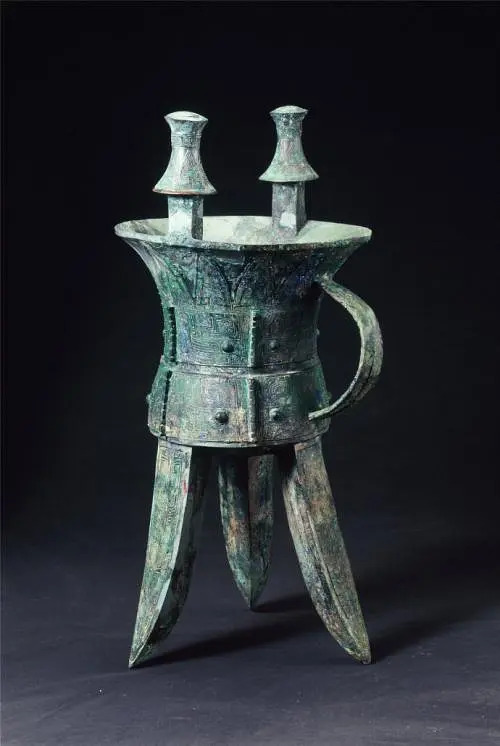
④ Léi (罍)
Wine storage vessel. Popular Late Shang to Mid-Spring and Autumn. Described in Book of Songs. Comes in square (wide shoulders, two handles) and round (large belly, ring foot) forms.
④ 罍:盛酒器。流行於商晚期至春秋中期。《詩經·周南·卷耳》記:「我姑酌彼金罍,維以不永懷。」有方形和圓形兩種形式。
⑤ Yǒu (卣)
Specialized container for aromatic ritual wine. Named since Song Dynasty. Characterized by contracted mouth, large belly, swing handle, and cover.
⑤ 卣:盛酒器,專門用來盛祭祀時用的一種香酒秬鬯。現在將一種具體器類定名為卣的說法始於宋代。基本形制是斂口,碩腹,頸部兩側有提梁,上有蓋,蓋上有鈕,下有圈足。
⑥ Gū (觚)
Drinking vessel with long tubular body, flared mouth, and sloping ring foot. Popular Early Shang to Early Western Zhou.
⑥ 觚:飲酒器。最早見於商代早期,流行至西周早期漸漸衰落,西周中期以後基本不見。觚的形制特徵是長筒狀身,大喇叭口,斜坡狀高圈足。
⑦ Gōng (觥)
Wine vessel with animal-shaped cover or complete zoomorphic form. Distinguished from zūn by having a spout.
⑦ 觥:盛酒器。器蓋均作獸首狀,或者全器做成動物狀。然而兩者最大的不同是觥有流,而尊沒有。
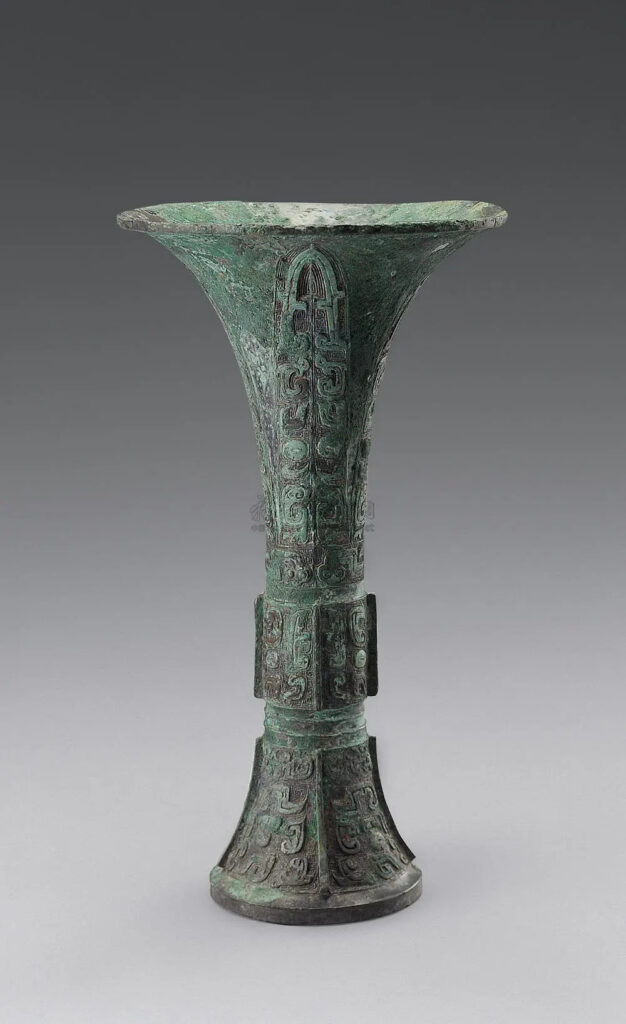
⑧ Hú (壶)
Wine storage vessel mentioned in Book of Songs. Used from Shang to Han and beyond. Complex formal variations. (Tip: Vessel-covering-lid usually hú, lid-covering-vessel usually yǒu)
⑧ 壶:盛酒器。《詩·大雅·韓奕》記「清酒百壺。」銅壺的使用時間從商代到漢代甚至更晚,因而變化的形式也相當複雜。
⑨ Zhì (觯)
Drinking vessel in two types: flat-body (oval cross-section) and round-body. Both existed Late Shang to Early Western Zhou, round type continued to Eastern Zhou.
⑨ 觯:飲酒器。青銅器中習稱為觯的有兩類,一類是扁體(橫截面為橢圓形),一類是圓體,這兩類在商代晚期和西周早期都有,圓體觯一直沿用到東周。
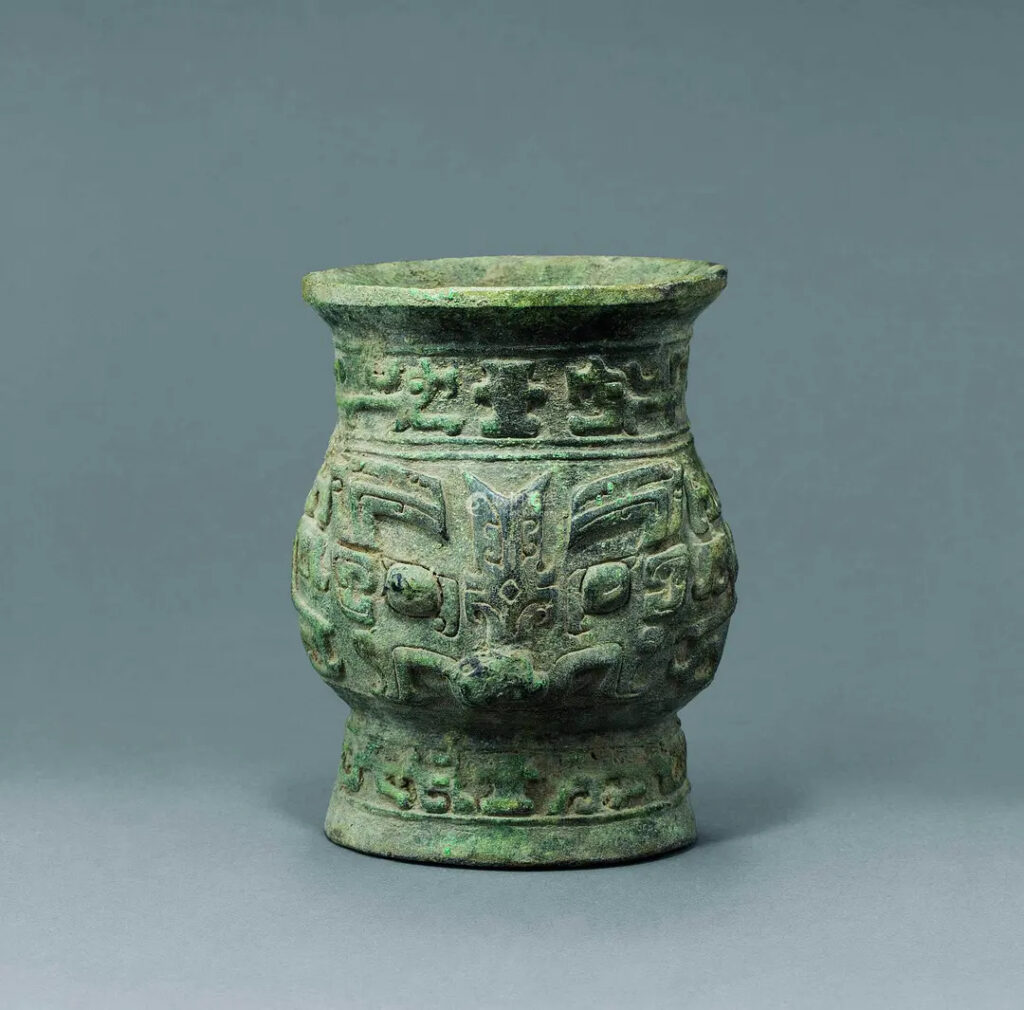
⑩ Zūn (尊)
Wine storage vessel with flared mouth, bulging abdomen, and high ring foot. Popular Late Shang to Mid-Western Zhou.
⑩ 尊:盛酒器。現通稱為尊的青銅器的基本形制為侈口,腹部粗而鼓張,高圈足,形體較寬。流行於商代前期偏晚至西周中期。
⑪ Fāngyí (方彝)
Rectangular wine vessel. “Yí” originally referred to all ritual bronzes, but this square form acquired its conventional name. Popular Mid-Shang to Early Western Zhou. Interestingly, lid decorations often appear inverted, possibly related to ritual placement.
⑪ 方彝:盛酒器。「彝」是所有青銅禮器的共名,但這種方形酒器一直未發現器名,所以學者們約定俗成將其稱為「方彝」。方彝流行於商代中期至西周早期。
⑫ Sháo (勺)
Wine ladle with short cylindrical body and handle.
⑫ 勺:取酒器。一般作短圓筒形,旁有柄。
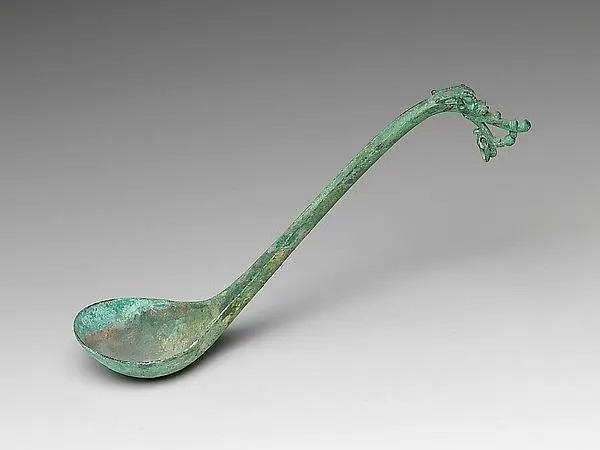
III. Water Vessels (水器)
三、水器
① Yí (匜)
Water pouring vessel for hand-washing rituals. Used with pan. Often found together in tombs. Appeared Late Western Zhou, popular to Warring States.
① 匜:是古代行沃盥禮時澆水的用具。《左傳》記「奉匜沃盥」,即用匜盛水從上而下澆手,下邊有盤盛接洗過的水。所以在墓葬中匜常與盤同出。
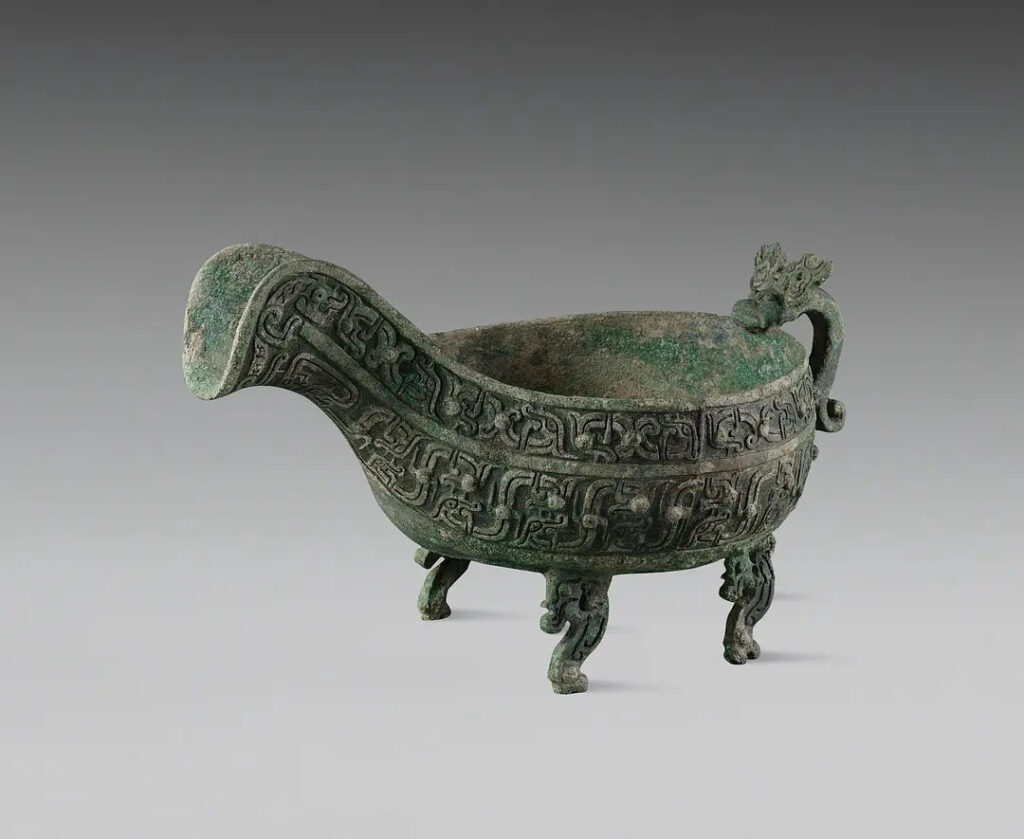
② Pán (盘)
Water receiving basin for ritual hand-washing, used with yí. However, bronze pans appeared Early Shang, so combination use began at earliest Late Western Zhou.
② 盘:是古代行沃盥禮時承水的用具,與匜配套。考古發掘時出土的匜往往放置在盤中。不過銅盤在商代早期就已經出現。
③ Hé (盉)
Vessel for blending and diluting wine. Appeared Early Shang, peaked Late Shang and Western Zhou, continued to Spring and Autumn and Warring States.
③ 盉:是用水來調和酒味濃淡的器具。銅盉出現在商代早期,盛行於商晚期和西周,流行到春秋戰國。
④ Jiàn (鉴)
Water basin that could also serve as bathtub or ice container (e.g., Marquis Yi of Zeng’s ice jiàn). Appeared Mid-Spring and Autumn, most popular Late Spring and Autumn to Warring States, still cast in Western Han.
④ 鉴:盛水器,從文獻來看,特大型的鑒還可以用作浴盆。除了水盆以外,鑒還可以當做冰箱來使用,如曾侯乙冰鑒。銅鑒出現於春秋中期,在春秋晚期和戰國時期最為流行,西漢時仍有鑄造。
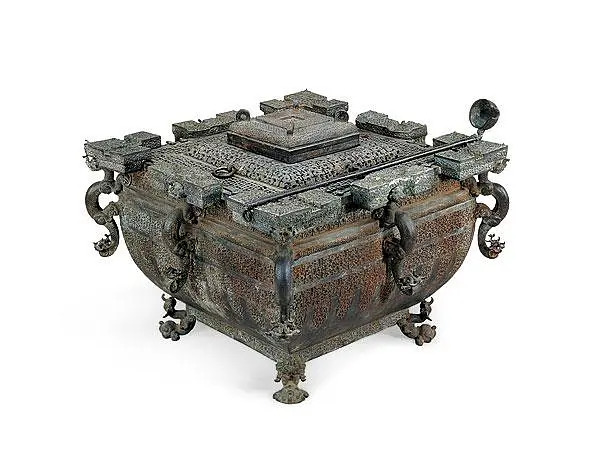
IV. Musical Instruments (樂器)
四、樂器
① Zhōng (钟)
Percussion instrument for temple rituals, banquets, and military use. Popular throughout Zhou Dynasty. Often used in graduated sets called biānzhōng (编钟).
① 钟:打擊樂器,既可作為宗廟祭祀與宗族宴享時的樂器,又可以作為軍中樂器。流行於兩周。西周時代的鐘多是成套的,這種就叫做編鐘。
② Náo (铙)
Percussion instrument for military commands. Popular Late Shang to Early Western Zhou. Held handle-upward and struck with wooden stick.
② 铙:打擊樂器,用於軍隊中傳播號令。流行於商代晚期和西周早期。使用時手握柄,口向上,另外一隻手執木棒敲擊。
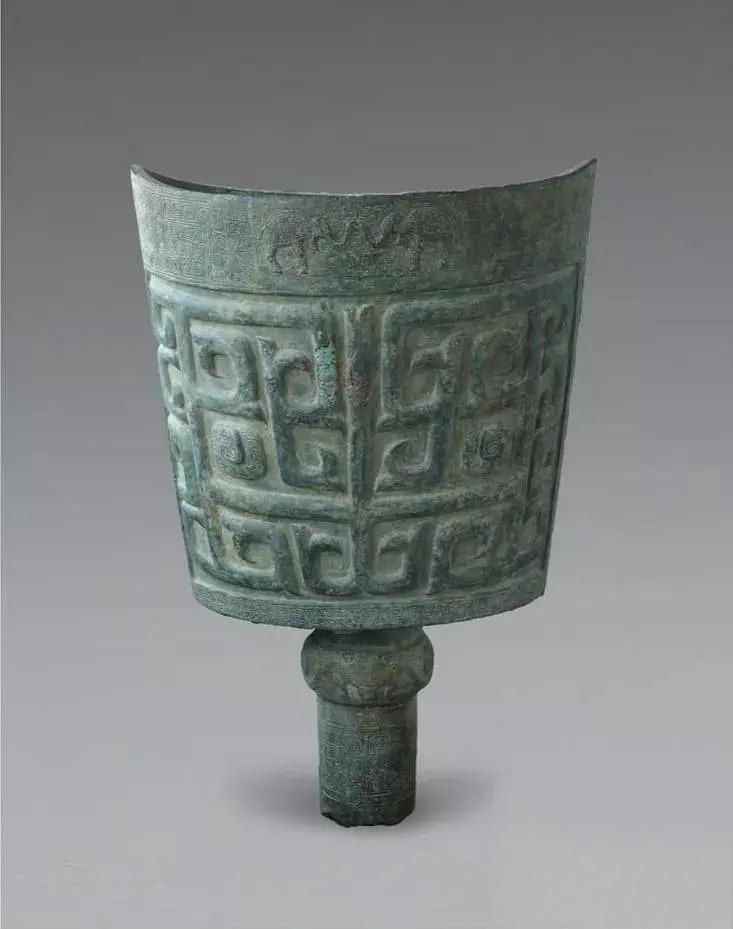
③ Chúnyú (錞于)
Percussion instrument first appearing Spring and Autumn period, popular Warring States to Eastern Han. Used with drums for battlefield commands and rituals.
③ 錞于:打擊樂器。最早出現於春秋時期,流行於戰國至東漢。錞于常與鼓配合,用於戰爭中指揮進退。
V. Weapons (兵器)
五、兵器
① Yuè (钺)
Chopping weapon. Popular Shang to Western Zhou. Small versions were functional weapons; large versions symbolized political and military authority.
① 钺:用以劈砍的兵器。主要流行於商至西周時期。小型鉞一般為實用兵器,而大型鉞往往作為高等級貴族政治、軍事權利的象徵。
② Gē (戈)
Hook-weapon for slashing. Appeared in Erlitou culture, continued past Warring States period.
② 戈:用於鉤殺的兵器。在青銅兵器中,戈是出現比較早的,在二里頭文化時期就已經出現,一直延續使用至戰國以後。
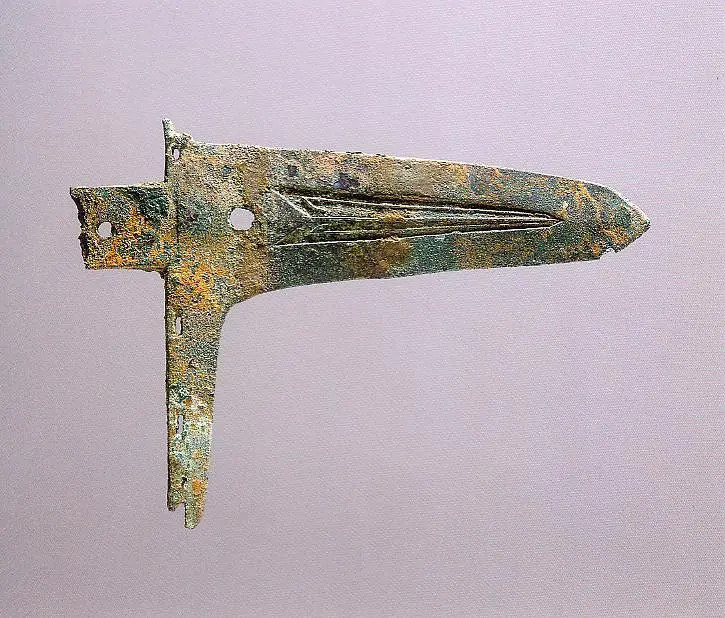
③ Máo (矛)
Thrusting weapon. Appeared Early Shang, continued past Warring States. Consists of bronze head, wooden shaft, and end fixture.
③ 矛:用於衝刺的兵器。最早出現於商代早期,一直使用到戰國以後。矛的整體包括三部分:銅矛頭、矛柲與柲下端安的銅鐓。
④ Jǐ (戟)
Combined weapon featuring gē hook-blade and máo spear-point, forming cross-shaped weapon with multiple offensive capabilities.
④ 戟:兵器,實際上是戈和矛的合成體,它既有直刃又有橫刃,呈「十」字或「卜」字形,因此戟具有鉤、啄、刺、割等多種用途。
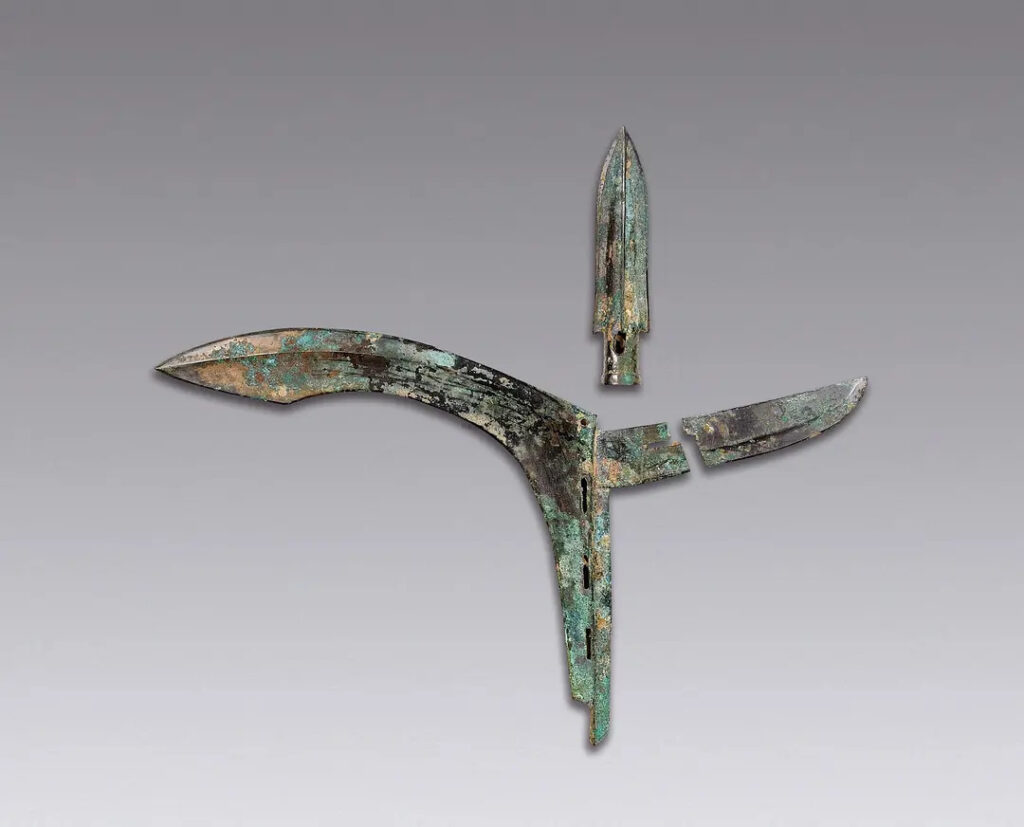
⑤ Zú (镞)
Arrowhead with sharp point, spread wings, spine, and tang. Appeared in Erlitou culture with strong regional variations.
⑤ 镞:安裝在箭桿前端的鋒刃部分,形體一般由尖峰和張開的翼以及脊和鋌組成。銅鐃在二里頭文化時期就已經出現,有較強的地域風格。
Read More
- Collectors' Academy (135)
- Care Academy (6)
- Investment Academy (22)
- Jade Crafting Techniques (28)
- Michelle Au: The Gemstone Luminary (11)

